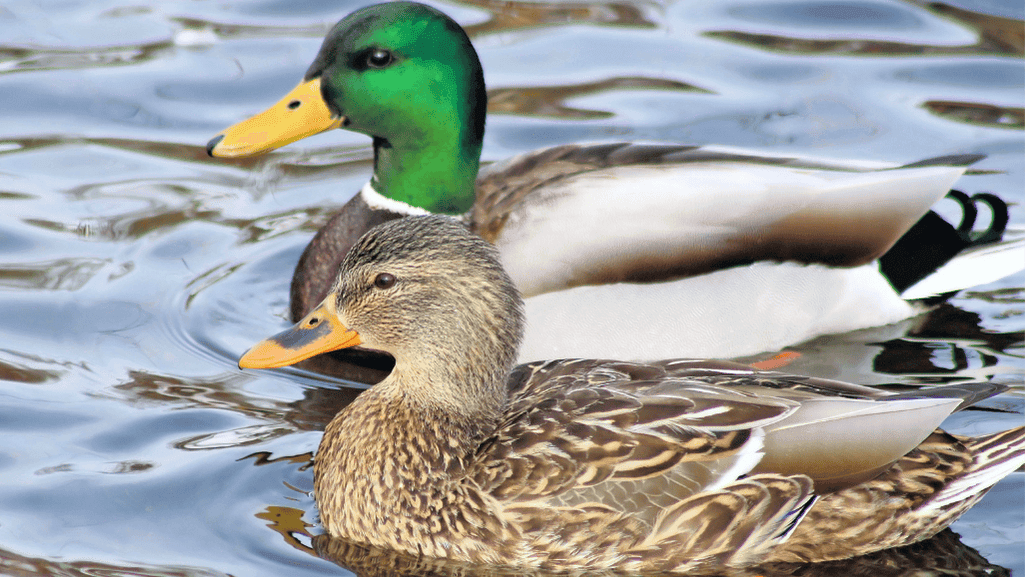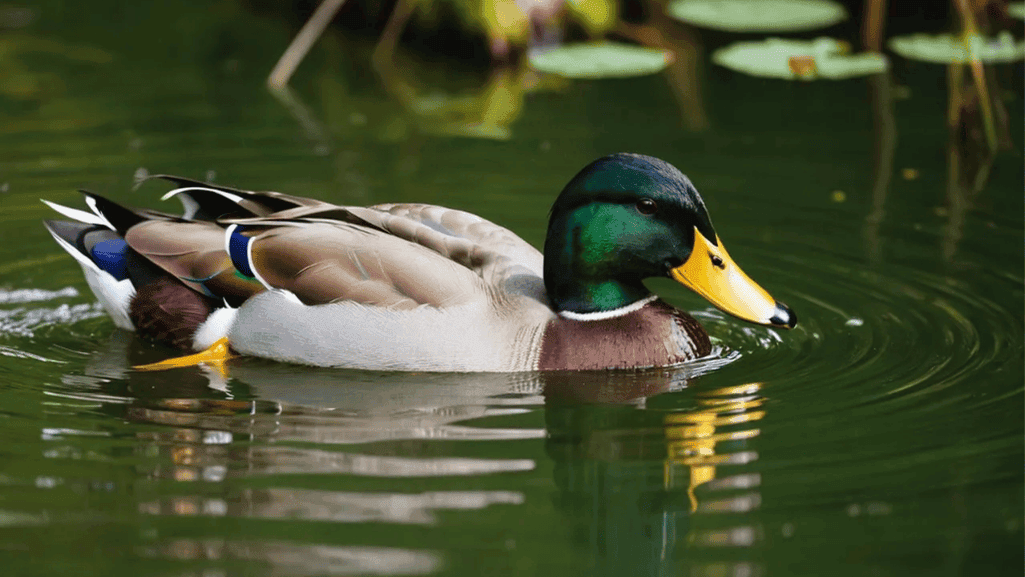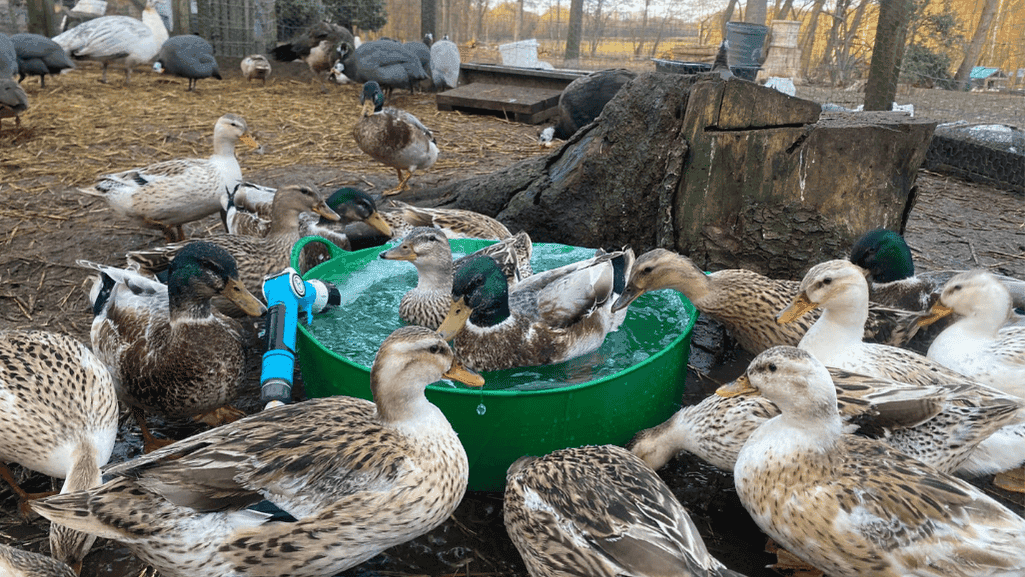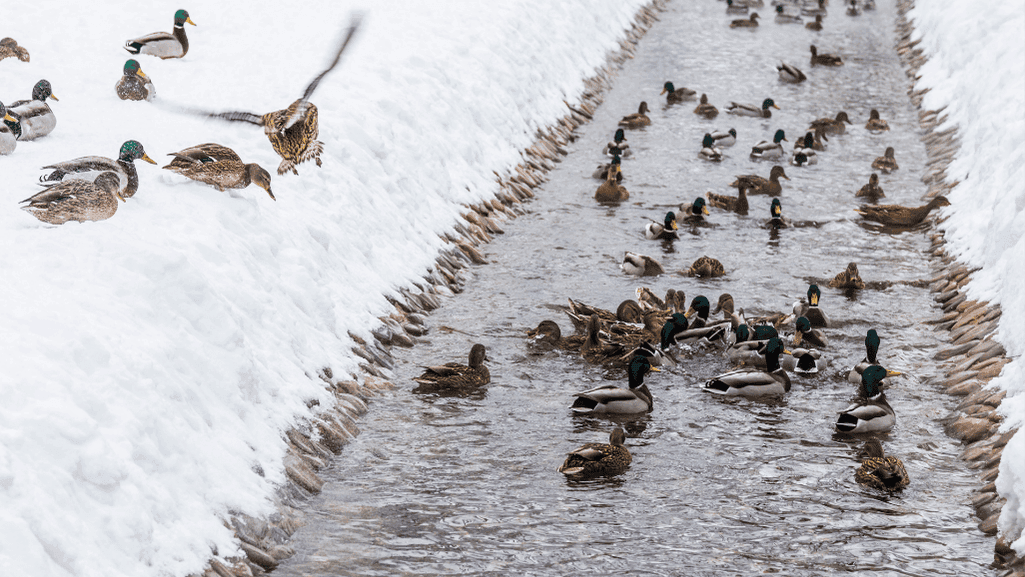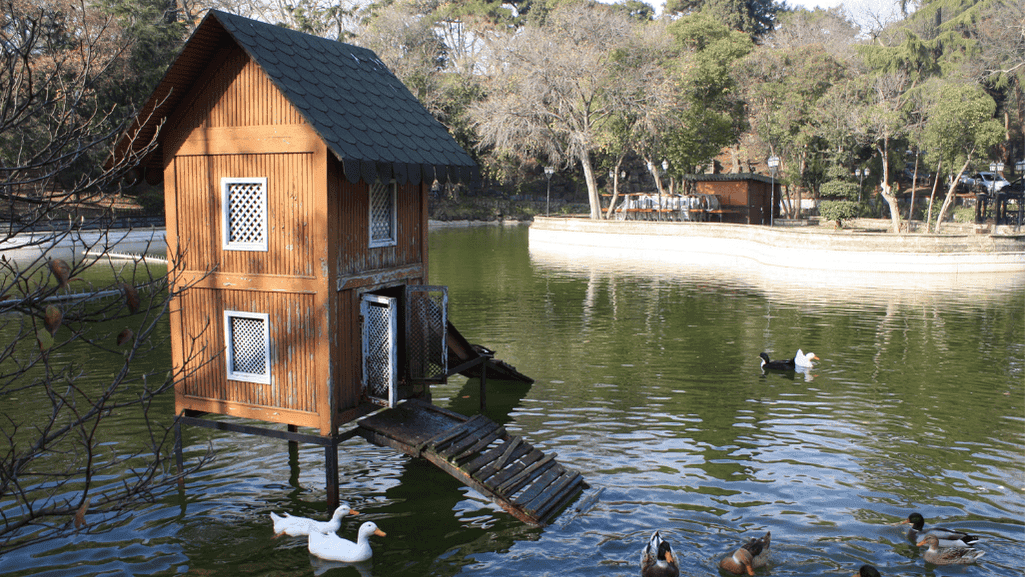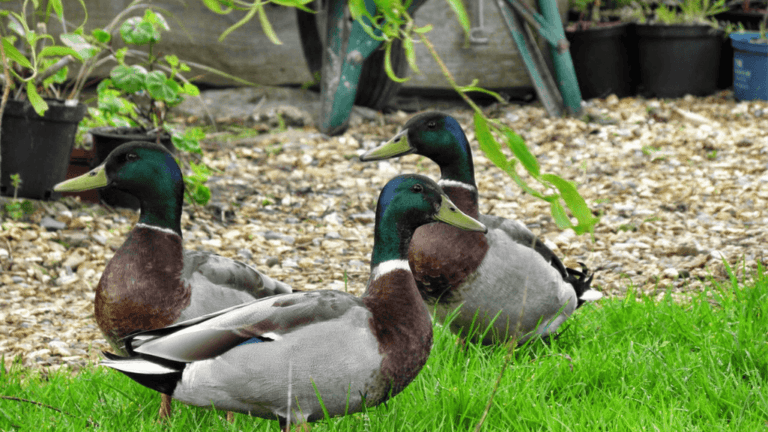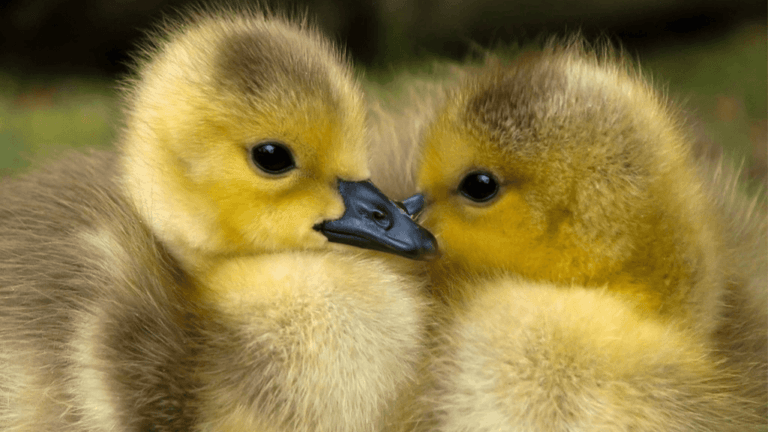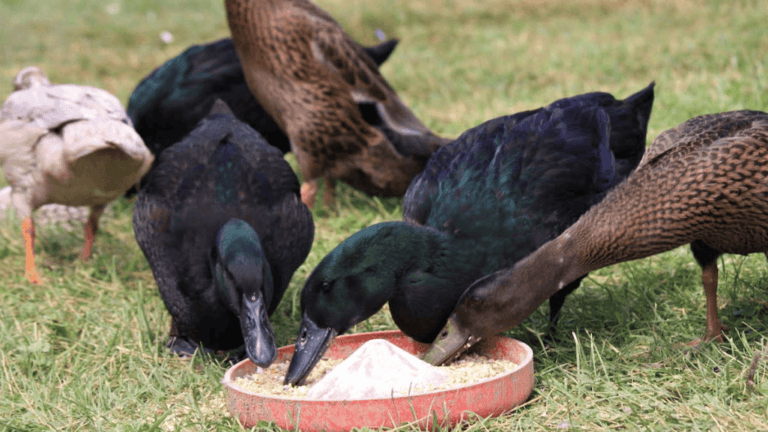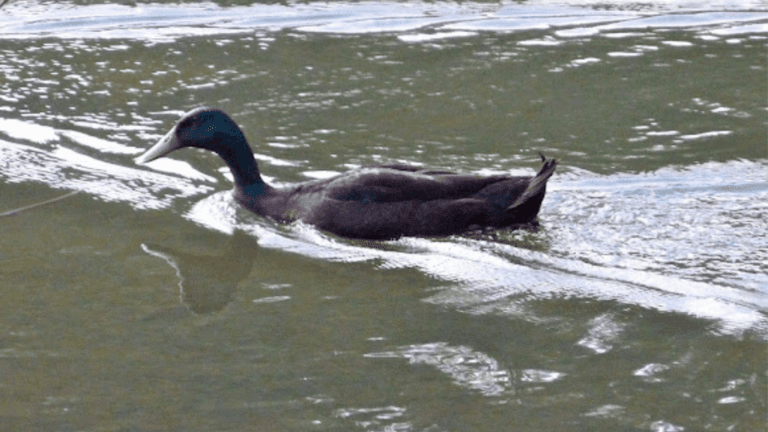When we think of companionship, we often think of dogs or cats. But adult ducks are also great companions. They bring joy with their quacks and unique waddle.
Ducks can become part of our families, just like any other pet. They show interesting behaviors and can form strong bonds. If you’re looking for a unique pet, an adult duck might be perfect.
Key Takeaways
- Adult ducks provide a distinctive and fulfilling companionship, akin to more traditional household pets.
- Proper duck care, including a diet rich in grains, greens, and protein, is critical for their health and vitality.
- Emotional bonds forged with ducks are deep and supportive, offering a different kind of friendship.
- Ducks as pets need tailored environments to flourish – they thrive on interaction and suitable living spaces.
- Understanding adult duck behavior is the first step towards a harmonious and gratifying relationship with your feathered friend.
- Being open to the unusual choice of an adult duck as a pet might just lead you to an unexpectedly joyful journey.
- Engaging with the wider community of duck enthusiasts can enrich your experience of keeping ducks as pets.
Discovering the Joy of Adult Duck Companionship
Getting an adult duck as a pet opens up a special world of friendship. Mature ducks mix personality, social fun, and help for the environment. They stand out as unique pets for those looking for something different.
Mature duck behavior is calming and content. A guide on adult duck companionship shows they’re more than pets. They help gardens grow and keep pests away.
Duck parenting and bonding are deep. Ducks form strong family bonds, which they can share with humans. With the right care, ducks and their owners can build a strong bond of trust and love.
Why an Adult Duck Makes a Unique Pet
Adult ducks make great pets for several reasons. Their behavior is easier to understand than ducklings. They are independent but love human company.
These birds also help the environment. They keep gardens healthy by eating pests and improving soil. This shows how useful and fun a mature duck can be.
The Emotional Bond: Ducks as Supportive Friends
Ducks are not just fun; they also support your emotional health. Many owners feel happier and less stressed when with their ducks. Their calm presence and playful sounds bring joy and comfort.
In summary, raising an adult duck is a special way to connect with a pet. They are good for the environment and bring happiness. Whether helping with gardening or just being there, unique pets like ducks offer a lot to those who care for them.
Understanding Adult Duck Behavior and Social Dynamics
Duck behavior is as intricate and fascinating as the birds themselves. Adult ducks are social animals, showing a variety of behaviors. These behaviors reveal their complex social dynamics. Observing these behaviors enriches birdwatching and deepens the bond between humans and ducks.
Imprinting is key to waterfowl behavior. Ducks imprint on the first moving objects they see after hatching. This early connection shapes their social interactions and trust dynamics throughout their lives. Ducks also need constant companionship to thrive, making them highly social within their flocks.
During mating season, duck behavior changes, especially in males. They become territorial and can be aggressive. Interestingly, male ducks (drakes) are not monogamous, but females may prefer a favorite mate. Experts recommend a ratio of at least three to four females per male to maintain harmony in the flock.
| Behavior | Description | Impact on Social Dynamics |
|---|---|---|
| Flirting | Rising out of water, shaking tails, bobbing heads | Initiates mating behaviors and mate selection |
| Imprinting | Bonding to the first moving object they see | Dictates trust and social interaction patterns |
| Feeding Rituals | Digging in mud for nutrients, blowing bubbles in water | Foraging behaviors that can influence flock movement and resting areas |
| Preening | Feather cleaning post-swimming, oil distribution for waterproofing | Maintains feather health, critical for insulation and buoyancy in water |
| Sleeping Habits | Sleeping with one eye open to stay alert | Survival mechanism to protect against predators |
Ducks also show behaviors crucial for survival, like walking in line for safety and wagging their tails to dry off. Understanding these behaviors helps in caring for waterfowl, ensuring their well-being and longevity. For more insights, visiting experts in duck behavior and care is enlightening.
In summary, the world of duck behavior offers endless opportunities for observation and interaction. Ducks are fascinating companions and a joy to watch. Whether in a farmyard or a natural setting, there’s much to learn and appreciate about these engaging waterfowl.
The Basics of Adult Duck Care Essentials
Caring for adult ducks involves many steps. This includes making sure they have a comfy place to live and the right food. Let’s look at the key parts of caring for adult ducks that every owner needs to know.
Creating the Perfect Duck Habitat at Home
Duck housing should feel like their natural home. It needs to be safe and comfy. Ducks don’t need a lot of space but a good habitat is crucial.
They need enough room, safety from predators, and clean water. Water is important for their health and happiness.
Feeding Habits: Nutrition for a Mature Duck
Feeding adult ducks the right duck diet is key to their health. They should eat crumbles or pellets to avoid choking. Their diet should have the right mix of proteins, carbs, and fats.
It’s not just about feeding them. It’s about feeding them the right food to keep them strong.
Essential Duck Health and Veterinary Care
Regular vet visits and care are vital for duck health. Adult ducks need to be watched for diseases. Owners should keep their ducks healthy with the right diet and clean living space.
It’s important to find a vet who knows about aquatic birds. Regular vet visits can catch health problems early. This is key for their long life and happiness.
- Duck care tips: Always ensure fresh, clean water is available to prevent dehydration and aid in proper digestion.
- Pay attention to changes in behavior or appearance which might indicate health issues.
- Understand your duck’s needs and behaviors by researching via reliable sources or consulting experts.
For more detailed advice on keeping ducks as pets, check out this link. It’s a must-read for anyone with or thinking of getting ducks.
Raising Ducks: Incorporating Adult Ducks into Your Flock
Adding adult ducks to your backyard flock can be very rewarding. It brings new life and variety to your group. It’s important to understand how to breed ducks and keep a peaceful flock.
Introducing an Adult Duck to Existing Poultry
Bringing adult ducks into your flock needs careful planning. Start by meeting them in a neutral area to avoid fights. Experts say to introduce them when they’re 6 to 8 weeks old for best results.
Start with a slow introduction to avoid stress or fights. The Cape Coop’s article on adding new ducklings has great tips for this.
Managing Duck Reproductive Behavior in Mixed Flocks
Watching how ducks breed in a mixed flock is key. Be careful when introducing female ducklings to adult drakes. Watch them closely to prevent fights. Ducks New World offers helpful advice on when and how to do this.
| Introducing Adult Ducks | Integrating Ducklings |
|---|---|
| Days 6-12: Adult ducks start accepting ducklings, monitored interactions required. | 2-3 weeks old: Ideal age for introducing ducklings into a mixed flock. |
| Bad outcomes: Potential for nipping, immediate separation needed. | 1-2 hours of daily supervised introduction post-positive interaction. |
Managing a diverse flock of ducks and other birds is a big job. It’s not just about caring for them, but also about their relationships. Make sure they have enough space, especially if you have geese.
Designing a Duck Coop for Adult Duck Housing Needs
Creating a good home for adult ducks means knowing their duck habitat requirements. A great duck coop design offers safety, comfort, and meets their health needs. Here are key points and steps to design a coop for adult duck housing and successful backyard duck keeping.
Ducks are lively and like to be around others. They need enough room inside and outside their coop. A well-designed coop lets them move and interact with their surroundings healthily. Here’s a closer look at the space and structure needed for a duck coop.
| Requirement | Details | Dimensions |
|---|---|---|
| Floor Space per Duck | Minimum space needed inside the coop | 4 square feet |
| Outdoor Space per Duck | Secure area needed per duck; more space recommended if not free-ranging | 10-20 square feet |
| Duck House Door Size | Sufficient width and height for duck entry | 14 inches wide x 12-14 inches high |
| Ventilation | Essential to manage moisture levels | Top of the house |
| Material | Recycled wood can be utilized | Varies |
Think about ducks’ behavior and likes for a better habitat. Adult ducks like to go outside at night and are more cold-tolerant than chickens. It’s important to make sure they can sleep outside comfortably.
- Ducks prefer larger space for feeding: Provide at least 12 cm of feeding space per duck.
- Ample clean drinking water should be available, with around 3 cm of water space per adult duck.
- Consider creating a concrete pond for swimming, which should be 1 m wide by 0.25 m deep.
Remember, the size and design of your coop can grow with your duck family. Plan your duck coop design for future needs, making it easy to add more ducks.
In summary, a well-designed duck coop does more than just provide shelter. It boosts the health and happiness of adult ducks. Whether you’re starting with backyard duck keeping or improving your setup, keep these tips in mind for a great duck habitat.
Uncovering the World of Duck Breeds and Species
Duck breeds come in a wide variety, including domestic duck and wild duck species. Each is adapted to different environments and lifestyles. Knowing these differences helps us identify birds and appreciate their unique traits.
Identifying Characteristics of Common Domestic Duck Breeds
Domestic ducks are found in farmyards and parks. They come in many breeds, each with its own look and behavior. For example, Pekin ducks are friendly and big, while Muscovy ducks have a special face and are quiet.
Knowing these traits is key for duck care and bird watching.
Wild Versus Domestic: Understanding Duck Species Variances
Wild and domestic ducks are very different. Wild ducks, like the Wood Duck, are colorful and have survival skills. They live in natural habitats. Domestic ducks, bred for size, temperament, and egg laying, live in farms or with people.
Wild ducks live in wooded swamps and marshy lakes. They nest in cavities, like tree holes. Domestic ducks can live in small homes or big farms.
When identifying ducks, look at where they live and how they act. This helps tell if they are wild duck or domestic duck. This is important for bird watchers, scientists, and those who care about the environment.
Exploring the links between duck breeds, bird identification, and fowl characteristics helps us appreciate and care for these birds better.
Outdoor Adventures: The Benefits of Backyard Duck Keeping
Backyard duck keeping is a joy for many, adding beauty to landscapes and enhancing lifestyles. The sight of ducks in a duck pond is peaceful. It also offers a chance for environmental enrichment. This hobby brings nature and fun together in your yard.
Environmental Enrichment for Ducks and Their Owners
Creating a good home for ducks is more than just a shelter and pond. It’s about making a space that feels like their natural home. This lets them act naturally, which is good for their health and for those who watch them. Adding plants and changing the pond’s water level makes their lives better.
Ducks help by eating pests, making the yard healthier. This makes their home a peaceful place for their owners too.
Joining the Birdwatching and Waterfowl Enthusiast Community
Keeping ducks also means joining a community of bird lovers. This community shares knowledge and experiences. It’s a great way to learn more about waterbirds and how to care for them.
There are events and talks where you can meet others. It helps you get better at keeping ducks and learn about wildlife care.
Understanding what different duck breeds need is key. Each breed has its own needs and produces different things. Here’s a look at what some breeds might need and give:
| Breed | Eggs/Year | Space Needed (Sq ft Indoor/Outdoor) | Niacin mg/day |
|---|---|---|---|
| Pekin | ~200 white eggs | 6/20 | 12.5 |
| Runner | ~200 eggs | 4/16 | 12.5 |
| Khaki Campbell | Up to 300 cream-colored eggs | 4/16 | 12.5 |
| Cayuga | 3-4 eggs/week | 4/16 | 12.5 |
| Rouen | 3-5 bluish-tinted eggs/week | 6/20 | 12.5 |
Different breeds need different things. This shows the importance of tailoring care to each breed. It helps them thrive and add to the backyard’s ecosystem.
Adult Duck Diseases and Prevention
Keeping adult ducks healthy means knowing about avian health and using preventive care. Ducks face many health problems, some serious. It’s key to understand duck diseases and take steps to prevent them.
Viral infections like Duck Virus Enteritis are big worries for adult ducks. This disease causes ducks to feel weak, have messy feathers, and have bad diarrhea. Luckily, there’s a vaccine that can help prevent it.
Other big health issues include Anatipestifer and Aspergillosis. Anatipestifer makes ducks lose weight and can be deadly. Aspergillosis attacks the lungs and is very bad in dirty places. Keeping their living area clean is very important.
- Regular Veterinary Check-ups: It’s crucial to have a veterinary expert check on ducks often.
- Vaccination: Vaccines can stop diseases like Duck Plague and Duck Virus Hepatitis, keeping ducks healthy.
- Sanitary Living Conditions: Keeping their area clean helps avoid many diseases, like Avian Cholera and Aspergillosis.
Keeping ducks healthy means using both prevention and treatment from vets. This helps keep the flock healthy and avoids big health problems.
Also, what ducks eat and where they live is very important. Keeping them away from harmful things in their food or water can help a lot. Knowing and acting on these dangers is part of good preventive care.
If you have ducks, working with places like the Animal Health Diagnostic Center at Cornell University is a good idea. They can help keep your ducks healthy with their expert advice and services.
In short, while duck diseases are a big problem, using preventive care, seeing the vet often, and knowing how to manage them can help a lot. This way, you can keep your ducks happy and healthy for a long time.
Conclusion
The journey of caring for adult ducks is filled with learning and joy. It comes with its own set of challenges and rewards. Understanding how to care for them can greatly enrich both your life and theirs.
Even simple things like duck nutrition show how complex caring for ducks can be. They need more niacin than chicks because they grow so fast. Creating the right duck habitat is also key to their happiness and your peace of mind.
Ducks add a lot to our lives, from their unique foraging skills to the nutritional value of their eggs. Their eggs have more protein and fat than chicken eggs. Ducks also live in communities, adding to the beauty of poultry.
There are many types of ducks, with over 38 species of dabbling ducks. The American Poultry Association recognizes 17 domesticated breeds. This shows the wide range of ducks found in small farms and large operations worldwide.
The White Pekin duck is a favorite for its meat quality and egg production. Raising ducks responsibly is like following Google’s data protection rules. It shows the care and thoughtfulness needed in duck care. As you raise ducks, remember the joy and companionship they bring.


